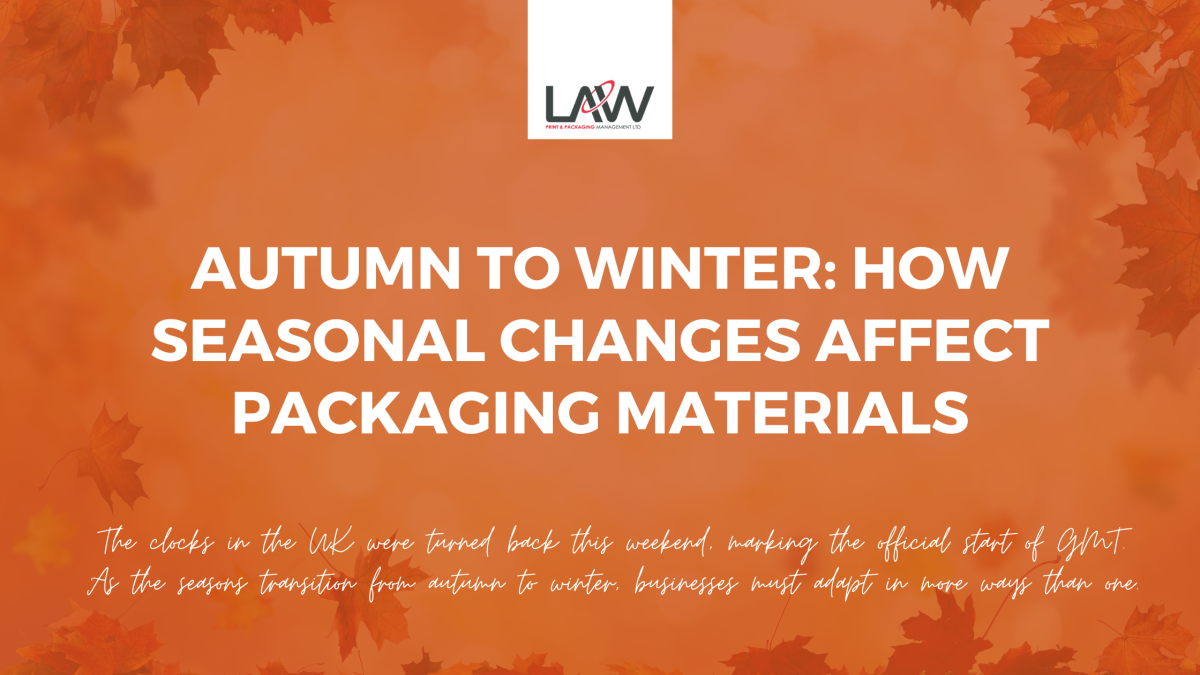Beyond adjusting to market demands, seasonal changes can impact the materials we use in packaging—especially for industries relying on flexible packaging such as food, beverage, and even building materials.
Understanding how cooler temperatures, humidity levels, and supply chain dynamics shift during the colder months can help businesses avoid potential packaging challenges.
One of the most significant changes that autumn and winter bring is the drop in temperature. Packaging materials, particularly flexible plastics and laminates, are sensitive to colder conditions.
- Brittleness: Low temperatures can cause certain flexible plastics, like polyethylene, to become brittle, which may result in cracking or damage during transport. This is especially critical for packaging food products often exposed to cold storage.
- Barrier Properties: To preserve freshness, food and beverage packaging must protect against moisture and oxygen. Cold, dry air can cause some materials to stiffen, potentially compromising the packaging’s barrier properties. Multi-layer packaging materials designed for enhanced barrier properties are essential to counter this.
Pet food, typically packaged in plastic or multi-laminate bags, must retain its freshness during transport and storage. With lower temperatures, there’s a risk of material stiffness, leading to poor sealing or cracking during transit. Businesses should liaise with a packaging supplier, who can advise on packaging materials with robust barrier properties and flexibility to withstand these changes.
While colder weather generally reduces ambient humidity, there can be variations depending on geographical locations and indoor environments. A decrease in humidity may not seem concerning, but it can have subtle effects on packaging materials.
- Moisture Control: During winter, the heating systems in warehouses and retail stores often dry the air, potentially drawing moisture out of products packaged in permeable materials. In contrast, some regions with fluctuating weather may see increased humidity, causing condensation inside the packaging. Both scenarios highlight the need for an honest conversation about your product and how it will be stored.
Sports nutrition products, such as protein powders or bars, are moisture-sensitive. Packaging that offers high moisture protection, like metallised films or oxygen barriers, helps ensure the integrity and shelf life of the product even in varying humidity levels.
Autumn and winter also bring unique logistical challenges. From delays in supply chains due to extreme weather to rougher handling conditions as products travel through colder climates, packaging must withstand these stressors.
- Impact Resistance: Transporting products over icy roads or through snowy conditions increases the risk of mishandling or accidents. Packaging materials should have high puncture and impact resistance to ensure product safety despite harsh conditions.
- Cold Storage: For products that require refrigeration or freezing, such as frozen foods or beverages, cold storage becomes more crucial. The shift from ambient temperatures to extreme cold can impact packaging integrity if materials are not selected carefully. Polyethylene and PET-based flexible materials, often used for food storage, offer excellent cold resistance and flexibility.
As sustainability becomes increasingly important, businesses must consider how eco-friendly packaging performs during colder months. Flexible packaging made from recyclable or compostable materials must still deliver performance without compromising environmental goals.
- Recyclability vs. Durability: Recyclable packaging materials, such as mono-materials, need to maintain durability in cold weather. Speak to us about your product, and we can advise on whether mono material packaging is right for you.
In industries like construction, where products such as cement or adhesives are packaged in bulk bags, durability in winter conditions is paramount. By using recyclable materials with enhanced durability for colder months, companies can ensure their packaging remains intact during transport while meeting sustainability goals.
As autumn fades into winter, businesses must be proactive in selecting the right packaging materials. From temperature fluctuations to logistical stressors, packaging materials face unique challenges in colder months. Whether you’re dealing with food, beverages, pet food, or building materials, the choice of flexible packaging must prioritise cold resistance, moisture control, and durability—all while keeping sustainability in focus.
If your brand wants to invest in quality packaging, we will guide you through the entire print process. In addition, we are providing recommendations along the way to improve efficiency, reduce costs and add untold value to the end product.
Contact us on +44 (0) 161 440 7302 or follow this link to complete our contact form – or, we’ll see you there!


